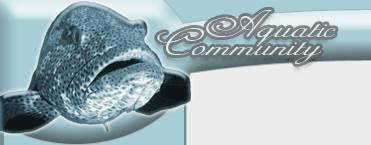| Tropical Fish | Marine Fish | Pet Birds | Dogs | Cats |
| Reptiles | Amphibians | Small Pets | Insects & Spiders | Wildlife |
Polar Bear Baby Cubs
Polar bear baby cubs are born inside the den in November, December or January. A litter will usually consist of two polar bear baby cubs, but giving birth to one single cub is also quite common. Litters containing three cubs are uncommon, and litters containing four cubs are even more unusual. Female polar bears will typically give birth once every three years, but in some polar bear populations it is not uncommon for a female to give birth every second year.
The mother will stay inside the den together with the polar bear baby cubs until late March or April. A newborn polar bear baby cub will spend most of its time nursing, and it must stay close to its mother to keep its body temperature up. The fur is not as developed as on an adult polar bear, and polar bear baby cubs will therefore appear to be virtually hairless. Polar bear baby cubs are born with their eyes closed and they are very helpless during this early stage of their life. The newborn polar bear baby cubs are approximately 12 inches (30 centimeters) long and will weigh approximately 16-24 oz. (454 to 680 g). A male polar bear cub is usually a bit bigger at birth than a female cub.
Before the polar bear baby cubs are one month old, their eyes will have opened. When they are around two months old, they will have grown a thick and protective fur. Their teeth will have emerged and the polar bear baby cubs are old enough to start walking around, but only inside the den. The female polar bear will emerge from the den accompanied by her cubs in late March or April, and the polar bear baby cubs will then have reached a weight of 22-33 lb (10 to 15 kg). It is however too early to leave the den completely, and the female and her cubs will stay near the den for almost two more weeks, sometimes even longer. The cubs need this time to get used to outside world and develop their walking muscles. The polar bear baby cubs will still frequently retreat to the den during this acclimatization period, and studies show that they spend around 85 percent of their time inside the den during this stage of their life. They will never sleep outside the den at this point.
The next important step for the polar bear baby cubs is to become introduced to the sea ice. The den can be located quite far away from the sea, and the travel will be slow and require regular stops for nursing. If the family encounters deep snow or open water, the female polar bear may carry her young ones on her back. When they reach the ice, the mother will start hunting and thus introduce the polar bear baby cubs to solid food. The combination of fat milk and seal blubber will make the polar bear baby cubs grow fast, and when they are eight months old they will weigh more than 99 lb (45 kg).
The polar bear baby cubs will develop their hunting skills by watching their mother. Perfecting their technique takes a lot of time, and the polar bear cubs will rarely be successful until they are well over one year of age. The mother will not be ready to breed again until her cubs are around 30 months old.
Female polar bear has four mammary glands and will usually nurse her polar bear baby cubs when she is laying down on her side or back, or while sitting up. As mentioned above, polar bear baby cubs need to nurse almost constantly during the first few weeks of their life. The amount of nursing will gradually be decreased as the cubs grow, but until they are 3-4 months old they will still nurse up to six times every day.
While cows milk averagely contains 3.6 % fat, the milk from a polar bear will contain around 33% fat. This makes the polar bear milk quite similar to the milk produced by marine mammals, such as seals and whales. The polar bear will nurse her young for an exceptionally long period of time compared to many other mammals, up to 30 months. It is however not unusual for polar bear baby cubs to stop nursing when they are around 18 months old, but these weaned cubs will steed depend on their mother and can not survive without her until they are around 30 months old. The female polar bear is an extremely protective parent that shields her polar bear baby cubs at any cost.
Related articles:
Black Bear
Black Bear Attack
Black Bear Facts
Black Bear Hunting
Brown Bear
Brown Bear Facts
Brown Bear Habitat
Brown Bear hunting
Panda Bear
Giant Panda Bear
Panda Bear Facts
Panda Bear Information
Panda Bear Habitat
Grizzly Bear
Grizzly Bear Attacks
Grizzly Bears In Alaska
Grizzly Bear Habitat
Koala Bears
Koala Bear Facts
Polar Bear
Polar Bear Fact
Polar Bear Informtion
Polar Bear Habitat
Animals by Region:
African
Arctic and Antarctic
Asian
Australian
European
North American
South American
Bears
Big cats
Birds
Eagles
Humming bird
Penguins
Pests
Marine animals
Sharks
Whales & dolphins
